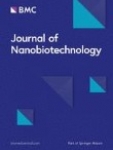Gelatin is a biodegradable biopolymer obtained by collagen denaturation, which shows poor mechanical properties. Hence, improving its mechanical properties is very essential toward the fabrication of efficient nontoxic material for biomedical applications. For this aim, various methods are employed using external fillers such as ceramics or bioglass. In this report, we introduce boron nitride (BN)-reinforced gelatin as a new class of two-dimensional biocompatible nanomaterials. The effect of the nanofiller on the mechanical behavior is analyzed. BN is efficiently exfoliated using the biopolymer gelatin as shown through Fourier transform infrared (FTIR) spectroscopy and X-ray diffraction (XRD). The exfoliated BN reinforces gelatin electrospun fibers, which results in an increase in the Young’s modulus. The Electrospun Mats (ESM) are stable after the glutaraldehyde cross-linking, and the fibrous morphology is preserved. The cross-linked gelatin/BN ESM is highly bioactive in forming bonelike hydroxyapatite as shown by scanning electron microscopy. Due to their enhanced mineralization ability, the cross-linked ESM have been tested on human bone cells (HOS osteosarcoma cell line). The cell attachment, proliferation, and biocompatibility results show that the ESM are nontoxic and biodegradable. The analysis of osteoblast gene expression and the measurement of alkaline phosphatase activity confirm that these materials are suitable for bone tissue engineering.



